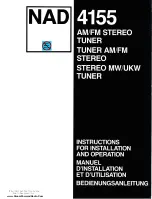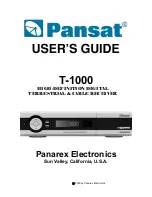
7
Lightning Protection
While amateur radio installations rarely suffer damage from lightning, the best protection is to
disconnect electrical devices during storms. The key to lightning survival is to properly ground
feedlines and equipment and to maintain the integrity of shield connections. A proper installation
improves lightning protection and enhances weak signal receiving performance.
Consult lightning protection and station grounding information in the ARRL handbooks, or by
referring to the NEC (National Electric Code). The DX Engineering website also has technical and
product information listed under “
Lightning Protection and Grounding
.” Use lightning surge
protectors for the coax feedline and control lines.
Four Square Layout
The receive four square array antenna elements should be
arranged in a square with the side lengths equal to 1/4-
wavelength of the target frequency for optimal results. The
diagonal corners of the square should point in the most
desirable receiving directions. Element 1 is the default
forward element, Element 3 is the rear or null element.
Position 1 in the EC-4 Controller would switch the four
square array to the North East toward Europe (preferred
direction for use in North America).
Figure 2 - Layout of the DXE-RFS-SYS-2P Receive Four Square System
Performance of the
RFS-3
can noticeably decrease if structures radiating even small amounts
of noise or signals are within 1-wavelength of the array
Measure side-to-side and then corner-to-corner to ensure the element locations are square.
Normally the
RFS-3
phasing unit is installed near the center of the four square array
elements, above any standing water or snow line, with the connector side facing down. The








































